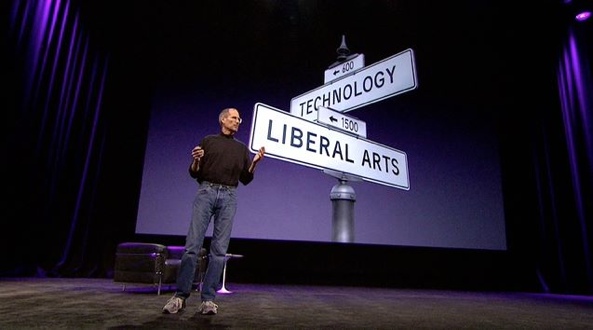Steve Jobs used to be frequently named the world’s best CEO – and for a number of reasons, too. Apple’s co-founder was (in)famous for his unique corporate style that flies against just about every conventional management lesson taught at universities. Indeed, one could learn a lot about business and life in general from Steve.
If you feel like expanding your horizons today, you should check out this collection of memorable business tips from Steve’s authorized biographer Walter Isaacson and Ken Segall, the marketing wizard and author of a new book titled “Insanely Simple: The Obsession That Drives Apple’s Success”.
Ken Segall, the man who dreamed up the iMac name, worked closely with Jobs on advertising concepts at both NeXT and Apple. He was also on the TBWA\Chiat\Day team credited with Apple’s famous Think Different campaign.
Segall compiled his years-long experiences working alongside Jobs in a book that promises to offer an insight at what makes Apple tick. It’s entitled “Insanely Simple: The Obsession That Drives Apple’s Success” and slated for release on April 26, 2012.
Forbes (via MacWorld UK) read through the whole thing and highlighted these eight leadership lessons Segall learned from Jobs.
Simpler is always better: Jobs’ advice: “One product, one box”.
Blunt communication works: Bluntness leaves no room for confusion, distraction or complexity.
Good leaders can compartmentalize: Jobs compartmentalized criticism so he could move towards his goals.
Small groups work better: Restrict meetings to people who would be discussing the topic at hand.
Keep things minimal and move quickly: Apple campaigns are put out within a month.
Simple names are superior: Apple does not hire naming experts, it relies on a small internal team and a group of advertising consultants.
Simplicity is human: Not a five-gigabyte drive on an iPod, but a “thousand songs in your pocket”.
Simplicity even works in retail: Focus on quality, uncluttered and inviting design and fantastic customer service.
As for the tips from Walter Isaacson authorized Steve Jobs bio book, this Harvard Business Review article list Isaacson’s pick of the thirteen most important leadership lessons of Steve Jobs…
Simplify: Eliminating the on/off button on the iPod showed Jobs’ Zen simplicity. The iPhone does not need a user’s manual.
Take responsibility: Everything is tightly linked, Apple takes full responsibility for the user experience.
Leapfrog: You don’t have to be a pioneer, just innovate to solve problems a different way.
Product before profit: Focus on making the product great and the profits will follow.
Don’t use focus groups: “Our task is to read things that are not yet on the page”.
Bend reality: The Reality-Distortion Field let Jobs convince people that they could produce great work in days rather than months. For example, telling the company behind Gorilla glass that they could create it in weeks.
Impute: Make a box where the unpacking is part of the glory of the product.
Push for perfection: Jobs pushed his team to achieve perfection and be proud of it. “Real artists sign their work”, he said.
Tolerate only “A” players: Jobs had a desire to work with the best. He didn’t want to work with any “bozos”.
Engage face-to-face: Creativity comes from spontaneous meetings – if a building didn’t encourage innovation, you lose the magic sparked by serendipity.
Know both the big picture and the details: Jobs’ passion was applied to issues both large and small. Including the vision that the PC should become a hub for managing all of a user’s content, and that that hub would become the cloud.
Combine the humanities with the sciences: No one else in our era could better wire together poetry and processors in a way that jolted innovation.
Stay Hungry, Stay Foolish: As Jobs said in his Stanford address: follow your own dreams, don’t live someone else’s life.
My personal favorite? None of the above, but this one.
What’s yours?

